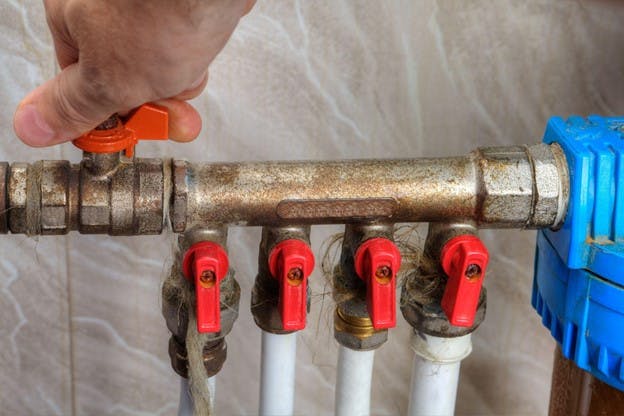Useful Strategies for Tackling Low Water Pressure in Your Home
Useful Strategies for Tackling Low Water Pressure in Your Home
Blog Article
Were you on the lookout for related information concerning Low Water Pressure in the House??

Low water stress in your home can be an aggravating trouble, impacting whatever from bathing to cleaning recipes. If you're experiencing weak water flow, there are a number of possible reasons and services to check out. In this overview, we'll discuss common factors for low tide pressure and functional steps to address the concern effectively.
Intro to Low Water Pressure
Low tide stress happens when the circulation of water from your faucets, showers, and other fixtures is weak than usual. This can make daily jobs much more difficult and much less reliable. Comprehending the sources of low water stress is vital to finding the appropriate service.
Common Reasons For Low Tide Pressure
Faulty Pressure Regulatory Authorities
Pressure regulatory authorities are accountable for maintaining consistent water stress in your house. If they malfunction, it can lead to low tide stress or irregular circulation throughout your house.
Metropolitan Water System Issues
Occasionally, the problem exists outside your home. Metropolitan water system issues, such as main line leaks or maintenance work, can momentarily minimize water pressure in your location.
Pipe Obstructions
In time, pipes can end up being obstructed with natural resource, debris, or particles, restricting the flow of water. This is a common concern in older homes with galvanized steel pipelines.
Rust
Deterioration within pipelines can bring about leakages and lowered water stress. Rust accumulation can restrict water circulation, specifically in maturing plumbing systems.
Just How to Diagnose Low Tide Pressure
Checking Pipes
Evaluate noticeable pipes for signs of leakages, deterioration, or blockages. Focus on any type of unusual audios, such as banging or rattling pipes, which might suggest concerns within the plumbing system.
Consulting with a Plumber
If you're incapable to determine the source of low water stress, consider employing a professional plumber to conduct a detailed assessment. They can determine underlying concerns and recommend suitable remedies.
Checking Faucets and Fixtures
Start by testing the water pressure at different taps and fixtures throughout your home. If the issue is isolated to particular locations, it may show localized troubles.
Do It Yourself Solutions to Fix Low Tide Pressure
Flushing Water Heater
Sediment build-up in the hot water heater can limit circulation and minimize efficiency. Flushing the tank periodically helps get rid of sediment and maintain ideal efficiency.
Checking Pressure Regulatory Authority
Make sure that the stress regulatory authority is functioning properly. Changing or replacing the regulator can aid bring back appropriate water pressure throughout your home.
Cleaning Up Aerators and Showerheads
Natural resources can gather in aerators and showerheads, minimizing water flow. Get rid of and cleanse these parts frequently to improve water pressure.
Clearing Clogs in Pipes
For small blockages, attempt using a plumbing serpent or chemical drain cleaner to clear obstructions in pipes. Beware when making use of chemicals and adhere to security standards.
When to Call an Expert Plumber
If do it yourself initiatives fail to settle the problem or if you suspect significant plumbing troubles, it's best to seek aid from an accredited plumber. They have the proficiency and tools to address complex concerns securely and successfully.
Preventive Measures to Maintain Water Pressure
Installing a Stress Booster
Take into consideration setting up a pressure booster pump to improve water pressure in areas with constantly low flow. This can be specifically useful for multi-story homes or properties with high-demand fixtures.
Surveillance Water Usage
Be mindful of water use habits and avoid ill-using the plumbing system. Simple modifications, such as incredible showers and laundry lots, can help keep ample water stress.
Normal Upkeep
Arrange routine maintenance for your plumbing system to stop concerns such as deterioration, leaks, and clogs. Attending to small issues early can assist prevent even more substantial repair work later.
Verdict
Managing low water stress can be frustrating, yet determining the underlying causes and executing ideal options can bring back optimum flow throughout your home. Whether it's cleaning aerators, checking pipes, or seeking advice from a plumber, taking proactive actions can guarantee a steady supply of water for your everyday requirements.
FOUR WAYS TO FIX LOW WATER PRESSURE NOW
Turning on a shower or faucet only to find the water comes out in a sad, slow drizzle is never a good feeling. How exactly are you supposed to wash a pan or take a quick shower when it takes 10 minutes just to rinse off a little soap? The good news is that when your water pressure is bad, there's always a cause: typically one that can be easily fixed. Here are some of the most common causes of low pressure and what you can do to fix the issue:
DEBRIS AND MINERAL DEPOSIT BUILDUPS
If you notice low water pressure from just one or two of the fixtures in your house, the problem likely has to do with debris buildup. Water is full of minerals and other debris, all of which can accumulate in your pipes and on your fixtures. This can cause a blockage that affects how much water flows through. To fix this, try filling a small plastic bag with white vinegar, and use a rubber band to hang it around your showerhead or faucet. Let the head of the fixture soak for a few hours, and the vinegar should loosen the deposits.
WATER LEAKS
Leaks are another common cause of low water pressure. If water is flowing out of your plumbing through a hole or crack before it can reach your fixture, the pressure coming out of the faucet or showerhead will be lower. A plumbing professional is your best bet for finding and repairing a leak in your water supply pipes.
Leaks are another common cause of low water pressure. If water is flowing out of your plumbing through a hole or crack before it can reach your fixture, the pressure coming out of the faucet or showerhead will be lower. A plumbing professional is your best bet for finding and repairing a leak in your water supply pipes.
A VALVE ISSUE
If you have low water pressure throughout your home, check your main shut-off valve to make sure it's completely open. You may also want to see if there's a pressure-reducing valve installed. If there is, have a plumber help you adjust the settings to get the pressure you're looking for.
OTHERS USING WATER
Believe it or not, your low water pressure could be caused by your neighbors. If you notice low pressure at certain times of day, it may be because you and the people living next to you have similar schedules - when everyone is showering at the same time, the pressure will be lower in every home. Low pressure throughout the neighborhood may also be caused by an issue with your municipal water supply. If that's the case, call the supplier to see if they're working on the issue.
https://www.rotorooter.com/blog/water-leaking/low-water-pressure-fixes/

We had been brought to that article on 9 Reasons for Low Water Pressure in Your House from a friend on our other web property. Do you know about someone else who is looking into Low Water Pressure in the House?? Do not hesitate to share it. I treasure your readership.
View Website Report this page